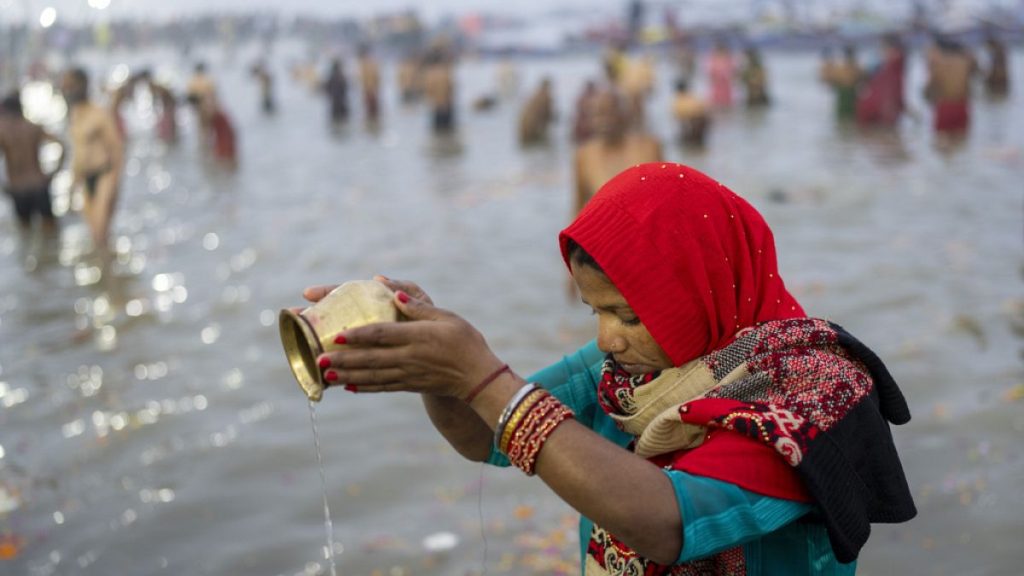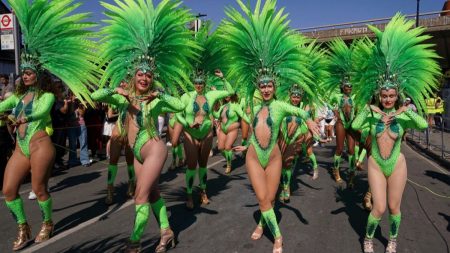The Maha Kumbh Mela, a spectacle of faith and humanity, has commenced in the holy city of Prayagraj, India, drawing millions of devotees to its sacred confluence of rivers. This 45-day festival, held every 12 years, represents the world’s largest human gathering, a testament to the enduring power of religious belief and tradition. Over the coming weeks, an estimated 400 million pilgrims, mystics, and holy men will converge upon Prayagraj, seeking spiritual purification and liberation through ritual bathing in the waters of the Ganges, Yamuna, and the mythical Saraswati rivers. The Kumbh Mela embodies a core tenet of Hindu faith, the belief that immersion in these sacred waters washes away sins, breaks the cycle of reincarnation, and offers a path to salvation. This ancient tradition, deeply rooted in Hindu mythology, transforms Prayagraj into a pulsating hub of spiritual activity, a vibrant tapestry of faith and devotion.
The sheer scale of the Maha Kumbh Mela is almost incomprehensible. Dwarfing even the annual Hajj pilgrimage to Mecca, the estimated attendance of 400 million people surpasses the entire population of the United States. This massive influx of humanity necessitates an extraordinary logistical undertaking. Prayagraj has been transformed into a sprawling temporary metropolis, a tent city equipped with over 3,000 kitchens, 150,000 toilets, and supported by a network of over 90 special trains. The festival grounds, spanning 40 square kilometers, encompass not only temporary housing but also roads, electricity grids, water supply systems, communication towers, and even 11 on-site hospitals to cater to the medical needs of the vast multitude. This meticulously planned infrastructure underscores the immense effort and resources dedicated to facilitating this momentous event.
The heart of the Kumbh Mela lies in the ritual bathing, a daily practice throughout the 45-day festival. However, certain “Mela” days hold particular significance, believed to be times when the rivers possess heightened spiritual potency. These auspicious occasions witness the most dramatic scenes, as naked, ash-smeared sadhus (holy men) rush towards the riverbanks at dawn for their ritual immersion. Many devotees choose to remain for the entire duration of the festival, embracing austerity and partaking in the purifying waters each morning. This collective act of faith creates a powerful atmosphere of shared devotion and spiritual renewal, a testament to the profound impact of the Kumbh Mela on its participants.
The Kumbh Mela is not confined to Prayagraj. This sacred festival rotates among four locations across India: Prayagraj, Nasik, Ujjain, and Haridwar. The Maha Kumbh, the grandest of these gatherings, graces Prayagraj only once every 12 years, emphasizing its unique significance. The Ardh Kumbh (Half Kumbh), held in 2019, attracted a comparatively smaller crowd of 240 million, with 50 million participating on the peak day. The sheer magnitude of the Maha Kumbh Mela, visible even from space, underscores its status as a truly global phenomenon, a remarkable testament to the enduring power of faith.
Security at an event of this magnitude is paramount. A force of 50,000 security personnel is deployed to maintain order, manage the immense crowds, and prevent potential stampedes. Leveraging technology, authorities utilize over 2,500 surveillance cameras, including AI-powered systems, to monitor the crowds and ensure safety. This comprehensive security approach reflects the challenges inherent in managing such a vast gathering, demonstrating the meticulous planning and coordination required to ensure a peaceful and secure experience for all attendees.
The Kumbh Mela is steeped in rich mythology, tracing its origins to a celestial struggle between gods and demons. Legend recounts Vishnu’s retrieval of a golden pitcher containing the nectar of immortality, a few drops of which are said to have fallen in the four cities now hosting the Kumbh Mela: Prayagraj, Nasik, Ujjain, and Haridwar. This mythological narrative imbues the festival with profound spiritual meaning, solidifying its place as a cornerstone of Hindu tradition. Beyond its spiritual significance, the Kumbh Mela also holds political weight, often used by political leaders to connect with India’s Hindu majority. While some see this as a celebration of cultural heritage, others raise concerns about the intertwining of religion and politics, highlighting the complex interplay of faith and power in the context of this grand event.














